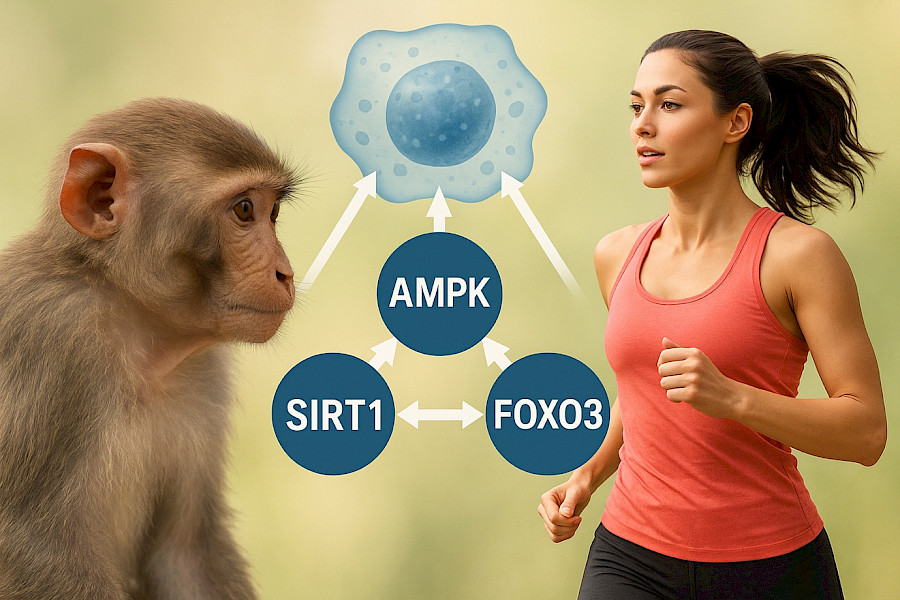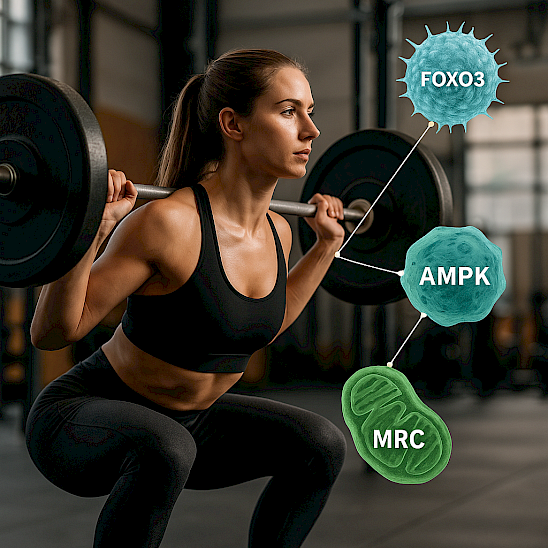
The revolution of eternal youth may be closer than we think. Scientists have created cells capable of slowing down aging in primates.
We live in an astonishing era of innovation, where the dream of active longevity is no longer mere fantasy. More and more scientists now claim that aging is not an unchangeable fate, but a process that can be influenced.
In June 2025, a groundbreaking study was published describing an experiment that could change the dynamics of aging in the near future. A group of researchers created a special type of cell—SRC (senescence-resistant cells)—based on human mesenchymal stem cells (MSC) and tested this modified form on elderly monkeys, whose genome is much closer to humans than that of rats. The experiment lasted almost a year: the animals regularly received intravenous SRC injections, while scientists monitored dozens of parameters—from brain condition to bone density.
The results were surprisingly impressive. The primates showed a reduction in the number of senescent cells, decreased chronic inflammation, improved immune function, and significantly increased neural activity. MRI scans revealed preserved brain regions responsible for memory, while cognitive tests showed better responses in areas linked to attention and learning. The monkeys’ bones became denser, and inflammatory processes in muscle tissue decreased. Most impressively, biological age markers “rolled back” by two to four years. Importantly, no serious side effects were observed in the animals.
Connection to humans
This research does not mean that a ready-to-use “rejuvenation injection” is already on the way to mass production. SRC cells remain an experimental technology, and cell modification is still a complex and risky procedure. Nevertheless, this study may mark a new stage in medicine, although it is still in the early stages of development. What conclusions can we draw now? If the performance of our own stem cells (MSC) is improved, the body can significantly slow aging and enhance the function of key tissues.
Who are our natural repair cells and how do they work?
At the core of SRC developed by scientists lie the human mesenchymal stem cells—MSC—one of the body’s main “repair workers.”
Simply put, mesenchymal cells are the ones that repair and renew tissues throughout the body, preventing them from deteriorating.
They reside in bone marrow, fat tissue, skin, and connective tissues, playing a key role in restoring bones, muscles, blood vessels, and skin. Healthy and strong MSCs actively secrete exosomes—microscopic “capsules” that exist in all body cells and are essential for tissue regeneration.
As we age, our MSCs lose their activity: they divide more slowly, become less resistant to stress, and sometimes turn into senescent (“old”) cells themselves. The more MSCs lose their power, the faster the signs of aging appear.
How did scientists achieve this?
SRCs are artificially enhanced human MSCs. Scientists modified them to make them nearly immune to aging while maintaining a high regenerative capacity.
The key element of this modification is the human FOXO3 gene inside the MSC—a gene often referred to as one of the “longevity genes.” It is responsible for DNA repair, protection from oxidative stress, and prevention of cellular aging. In regular cells, FOXO3 is not always active, but in SRCs, scientists boosted its activity.
The interest in SRC lies in their ability to strengthen three vital molecular pathways present in every human being:
FOXO3 (the longevity gene), SIRT1 (the enzyme that triggers cellular repair), and AMPK (the energy sensor of the cell). Together, they guard the youth and vitality of cells throughout our bodies.
The SRC cells created by researchers are an attempt to amplify this chain artificially. Yet, humans can activate the same natural mechanisms—if the right conditions are created.
How can a person naturally support MSC function and slow aging?

We cannot directly turn our MSCs into SRCs, but we can activate the same mechanisms that scientists enhanced artificially.
Studies show that the following are particularly effective:
1. Physical activity
The most powerful natural activator of AMPK and SIRT1.
The best combination includes:
• cardio,
• strength training,
• short interval (HIIT) workouts.
This boosts exosome secretion and accelerates tissue renewal.
2. Intermittent fasting (12–14 hours)
Triggers AMPK and SIRT1, reduces inflammation, and improves cellular stress resistance.
3. Polyphenols in diet
Green tea (EGCG), berries, grapes, cocoa, turmeric—all stimulate SIRT1 and support stem cell activity.
4. Quality sleep
One of the most important rejuvenation tools often neglected. Quality sleep (7–9 hours) is the best way for the body to recover and renew itself.
5. Stress management
Breathing exercises, yoga, walks, and meditation reduce the load on MSCs. Even 10,000 steps outdoors daily can significantly lower stress levels.
6. Short-term cold exposure (if no contraindications)
Contrast showers and ice baths boost immunity and improve cellular resilience.
Each of these factors activates the natural mechanisms of longevity, enhancing the body’s ability to repair and resist aging.
Conclusion
The SRC cell experiment demonstrated that by strengthening the protective mechanisms of stem cells, the body can significantly slow age-related changes—even in mature organisms. SRCs currently exist only in laboratories, but the key takeaway is this: the mechanisms of youth are already built into our bodies, and we can activate them through our lifestyle.
Regimes that support the “repair cells” AMPK, SIRT1, and FOXO3 include movement, good sleep, moderate nutrition, and freedom from chronic stress. These are real biochemical levers that help our bodies preserve youth. Science is a remarkable ally in the modern world—but without our participation, no miracle will happen. Your body, and how you feel, are largely in your own hands.



